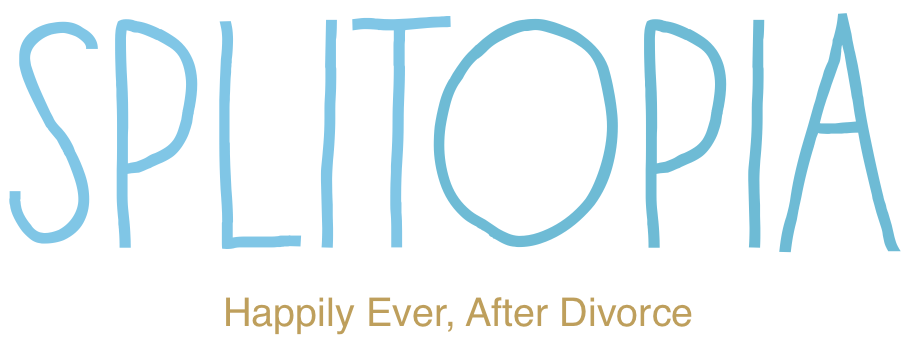Principle of Parting #1: Commit to Self-Compassion
/When I was going through my divorce, and writing a book about it, I created Seven Principles of Parting to help us all get through it well. Self-compassion my first Principle of Parting because in one of the most interesting recent studies about divorce recuperation, published in Psychological Science, self-compassion correlated most strongly with positive divorce recuperation.
Self-compassion is not a fixed characteristic like the color of your eyes. We can all develop it.
About two million people divorce in the United States each year, and while some bounce back quickly, others suffer for years. The big question for researchers, and for me while I was working on my book, is, "Why?" Why do some do well and others don't? What are the factors that promote resilience and recovery?
David Sbarra at the University of Arizona wanted to find out. He and his team asked 105 recently divorced participants to speak for four minutes in a stream-of-consciousness way about their divorce, and to fill out questionnaires about how they were recovering.
At the initial interview, and three, six and nine months later, those with high self-compassion reported fewer intrusive negative thoughts, fewer bad dreams about the divorce, and less negative rumination. “If you pick all of the variables that predict how people will do after their marriage ends, self-compassion really carries the day,” says Sbarra.
So what is self-compassion? A composite idea borrowed from Buddhism, self has three parts.
We can all build self-compassion by addressing its three parts:
1. See your problems as part of the universal human struggle.
It may feel as if you’re the only person in your family or on your block to end a marriage. But disappointment, loss, failure and divorce are all part of the human experience.
“At the general level, all human beings suffer, which is the first truth of Buddhism,” says Kristin Neff of the University of Texas at Austin. Neff was one of the first researchers to use Western social science methodology to study self-compassion, and to develop a scale to measure it. “But we think, 'This shouldn’t be happening!' We think that baseline normal is, ‘Everything is perfect!’ That sense of abnormality creates a feeling of isolation. Every single person on this planet is imperfect, makes mistakes, has difficult things happen in their lives. That’s normal.”
The easiest way to see your divorce as part of the broader human experience is to talk to any of the other two million people in the U.S. who divorced this year, or the rising number of people ending their marriages around the world.
Or, stop thinking about divorce and get out and do something for someone else. Helping others reminds you that you’re part of a world with many troubles, yours may be mild by comparison, and you have a great deal to contribute.
2. Remain calm and mindful.
A mindful approach to divorce is a balancing act—letting yourself sit with your negative feelings rather than running or drinking from them, and stepping outside of your divorce to reconnect with other aspects of your life that are going well. You want to both become aware of your feelings and also put them aside.
Meditating is a powerful, popular way to achieve mindfulness. One recent study published in Frontiers in Human Neuroscience showed that meditation reduced negative mental chatter even when people were off the mat and doing something else.
You also can work on mindfulness without mediation. Merely noticing the flowers, or being present with your child during breakfast rather than mentally rehearsing a fight you plan to pick later can reduce stress.
3. View yourself with understanding and forgiveness.
Harsh words we use on ourselves act like internal fangs. Our body responds as if facing physical threat, letting loose cortisol and adrenaline, explains Neff. But no lion is lunging. Sustained cortisol flooding can lead to stress, anxiety and even illness. This is not the ideal state for moving forward—or for making amends.
“The research shows that self-compassionate people are more likely to take responsibility for their misdeeds, apologize for what they did wrong and repair whatever harm they’ve caused,” says Neff.
One way to attempt self-forgiveness is to write yourself a supportive letter, offering the kind of encouragement you’d give a friend. You also can hug yourself, as sappy as it may sound.
Or defang self-blame by questioning your beliefs about divorce. We now have decades of research showing that divorce need not be a disaster for all involved. How you and your loved ones recuperate is not pre-ordained. You have control over what you do next. The more you learn about positive divorce recovery, and the more you see you and your family thriving, the easier it will be to let go of an assumed fault for ending your marriage.
More Resources
I explain the research, and how to apply it in Splitopia: Dispatches from Today's Good Divorce and How to Part Well. Also check out Kristin Neff’s book on the topic, Self Compassion: The Proven Power of Being Kind to Yourself. Or visit selfcompassion.org for more information, tools to help build self-compassion, and to sign up for a workshop or webinar.
To learn more about loving-kindness mediation, a good “gateway” practice for those new to it, check out the Center for Contemplative Mind in Society.
***
Wendy Paris is the author of Splitopia: Dispatches from Today's Good Divorce and How to Part Well (Simon & Schuster/Atria, 2016). Splitopia and her work on divorce have been covered by The New York Times, Real Simple, The Washington Post, The New York Post, The Globe & Mail, Psychology Today, The Houston Chronicle, Salon.com, Parents.com, Family Law Quarterly, PsychCentral.com and radio and TV shows nationwide. She has an MFA in creative nonfiction writing from Columbia University, and is an advocate for family law reform. She is divorced, and lives in Santa Monica, California, a few blocks from her former husband, with whom she has a warm co-parenting relationship.























